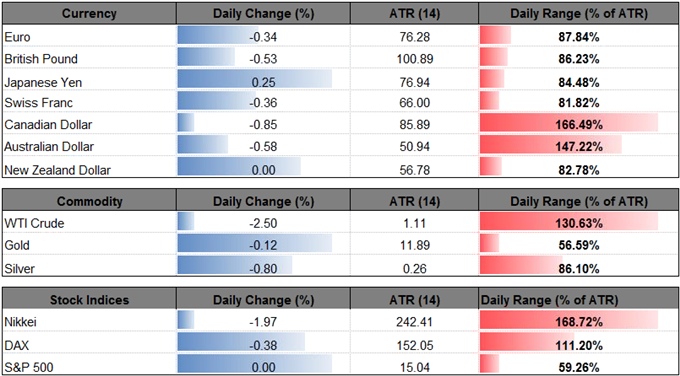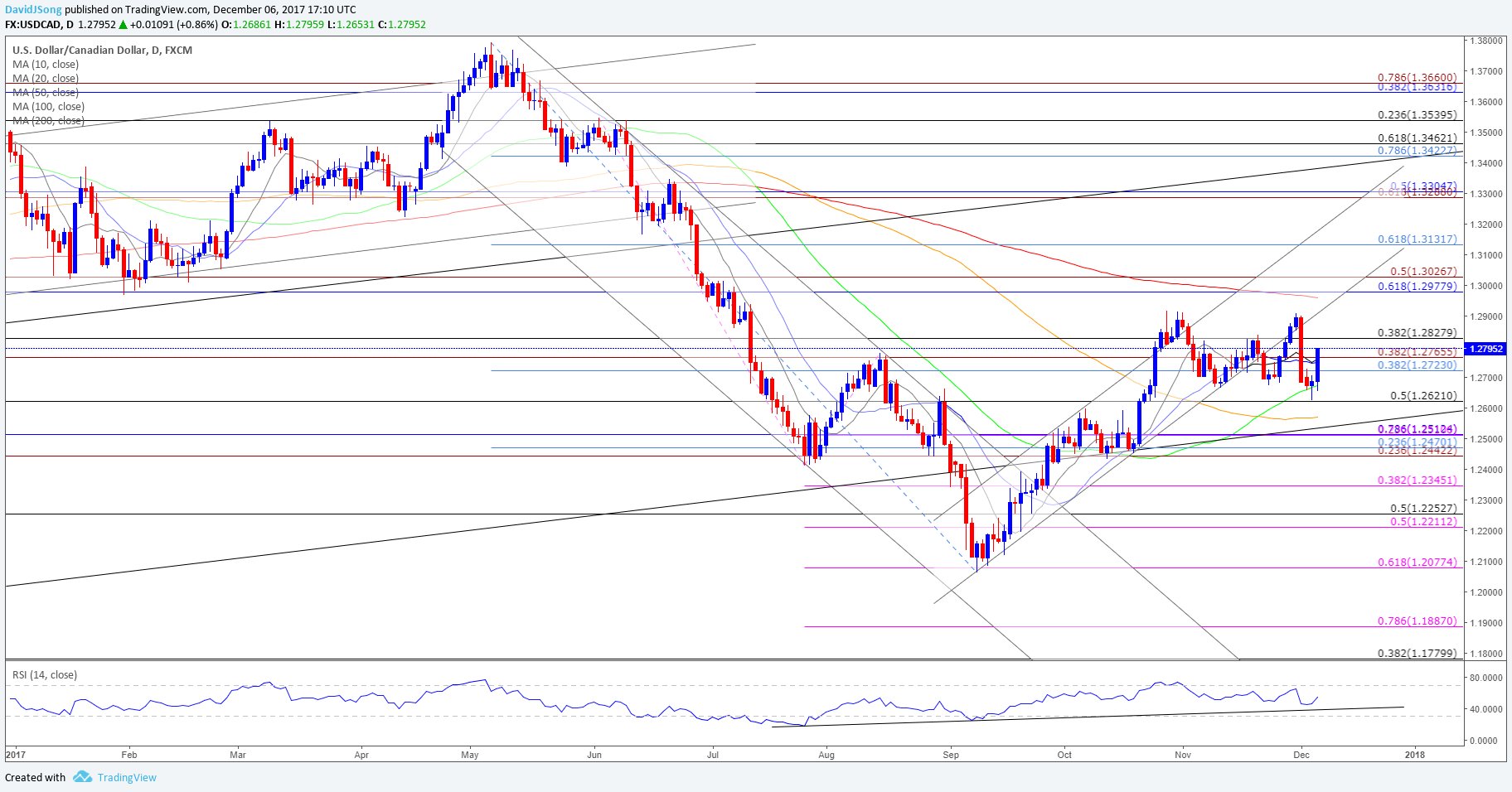

USD/CAD may continue to retrace the decline from earlier this month as the Bank of Canada (BoC) keeps the benchmark interest rate at 1.00% and tames expectations for an imminent rate-hike.
The fresh remarks from Governor Stephen Poloz and Co. suggest the central bank is in no rush to implement higher borrowing-costs as the recent pickup in inflation is largely driven by ‘temporary factors, particularly gasoline prices,’ and the BoC may continue to buy more time at the next interest rate decision on January 17 as officials reiterate that ‘the current stance of monetary policy remains appropriate.’ Nevertheless, the BoC may layout a more detailed exit strategy over the coming months as the central bank notes ‘higher interest rates will likely be required over time,’ but USD/CAD stands at risk of facing range-bound conditions over the near-term especially as market attention turns to the Federal Open Market Committee (FOMC) interest rate decision on December 13.
USD/CAD Daily Chart


AUD/USD pares the advance from earlier this month following Australia’s weaker-than-expected 3Q Gross Domestic Product (GDP) report, but fresh rhetoric from Reserve Bank of Australia (RBA) officials may keep the exchange rate afloat should the central bank gradually alter the outlook for monetary policy.
Governor Philip Lowe may reiterate that ‘it is more likely that the next move in interest rates will be up, rather than down’ as the central bank head is scheduled to speak at the Australian Payment Summit, and the RBA may start to prepare households and businesses for higher borrowing-costs as ‘the central forecast is for GDP growth to average around 3 per cent over the next few years.’ Keep in mind, the RBA appears to be in no rush to remove the record-low cash rate as ‘household incomes are growing slowly and debt levels are high,’ but Governor Lowe & Co. may start to adopt a hawkish tone over the coming months as ‘the Bank’s central forecast remains for inflation to pick up gradually as the economy strengthens.’













Leave A Comment